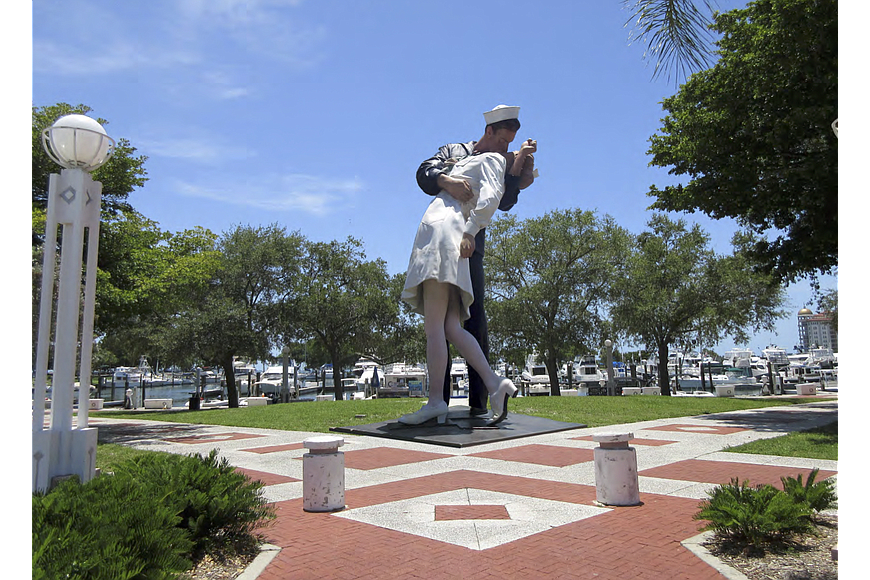- December 13, 2025
-
-
Loading

Loading

After more than five months of discussion, the City Commission has made a final decision on the placement of Unconditional Surrender: It’s moving slightly, but it’s staying on the bayfront.
The commission voted 4-1 today to permanently relocate the statue from its current home near the intersection of U.S. 41 and Gulfstream Avenue to a site between Marina Jack and Oleary’s.
Earlier this year, the city agreed to relocate the sculpture on at least a temporary basis to accommodate the construction of a roundabout at U.S. 41 and Gulfstream. Today, a majority of the commission said they wanted to keep Unconditional Surrender on the bayfront but avoid the process of moving it again when the roundabout is complete. The board settled on the spot between Marina Jack and Oleary’s as its favored choice from a suite of options staff presented.
“It just looks like it fits,” Commissioner Liz Alpert said of the new location.
The commission’s consideration of where to place Unconditional Surrender highlighted controversy surrounding the artwork that dates back more than a decade, to when the sculpture first went on display on the bayfront. Supporters of the piece have highlighted its popularity among visitors and described it as a tribute to veterans.
Opponents have criticized it as an unoriginal reproduction that does not meet the city’s criteria for public art. They have also said it depicts a nonconsensual kiss captured in the 1945 photograph V-J Day in Times Square. The city’s Public Art Committee has twice recommended against displaying it on the bayfront, once in 2009, and once again this year. Ahead of today’s meeting, some residents questioned whether the city had the legal right to display the artwork, because it had not procured a license for the copyrighted photograph.
City Attorney Robert Fournier said he believed the threat of legal action was remote and that the city would have a strong defense against any copyright claim related to the artwork. Fournier said city representatives reached out to the copyright holder as far back as 2006, which meant a three-year statute of limitations for pursuing a copyright infringement case had likely expired.
Fournier acknowledged that other federal courts had applied different standards to copyright infringement cases than those used by the 11th Judicial Court, which covers Florida. He said it’s possible the copyright holder could argue the statute of limitations had not expired, but he did not think it was likely. He also said he believed the copyright holder could claim $10,000 in damages, the licensing fee for the image.
“I just have the feeling they’re not terribly interested in pursuing it,” Fournier said of the prospect of legal action.
Commissioner Jen Ahearn-Koch was the lone vote against keeping Unconditional Surrender on the bayfront. In addition to the legal concerns, which she believed the commission did not adequately explore, she also asked questions about the structural integrity of the sculpture. If the city chose to continue to display the piece, she said her preference would be to place it at the Sahib Shriners property at 600 N. Beneva Road, because the group had said it could cover the cost of relocation.
“For me, it is the most fiscally responsible option,” Ahearn-Koch said.
The rest of the commission was supportive of keeping the art on the bayfront. Although those commissioners acknowledged the opposition to the sculpture, they said they believed the new location reflected the desire of the majority of the community — and that no decision would be able to satisfy everybody with an opinion on Unconditional Surrender.
“Art is not supposed to always convey a happy feeling,” Commissioner Erik Arroyo said. “… Maybe we’re supposed to be having this discussion right now.”